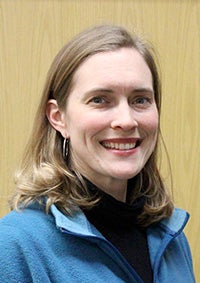Balance of power shifts away from the people
Published 9:26 am Tuesday, December 9, 2014
My Point of View by Jennifer Vogt-Erickson
Last month, Minnesota’s voter turnout hit its lowest point for a midterm election since 1986. The state barely mustered over 50 percent participation among eligible voters.
Freeborn County fared a little better than the state average with a 52.6 percent turnout, but it’s nothing to strut about.
Compared to other states, Minnesota lost its top ranking in voter turnout. Its disappointing showing appeared almost robust, though, against the abysmal average of 36 percent turnout nationwide. It’s the worst national showing in over 70 years.
Three of the largest states, including California, New York and Texas, all recorded less than one-third participation among eligible voters in the general election this year. Florida, with a hotly contested gubernatorial race, only drew 43 percent of its voters. Voters seemed apathetic and turned off.
What did show up for the election this year? Money. 2014 set another record for spending on a midterm election.
The various players burned through nearly $4 billion. Candidates spent roughly $1.7 billion, parties pitched in over $1 billion, and outside groups forked over close to $1 billion.
Behind these numbers, a very small group of donors is having an enormous influence on elections.
Big donors can get around individual limits in at least a couple of ways. One is to give to super political action committees, which can spend all their money on behalf of candidates but must disclose their donors. Donors to super PACs tend to favor Democrats. In U.S. Senate races this year, just 42 donors accounted for close to one-third of super PAC spending.
Another option for big donors is “dark money.” More outside money than ever is difficult to trace to its sources due to the growth of dark money in elections. This is spending by 501(c)(4) and 501(c)(6) groups, which are supposed to spend only half their money on political activities. Corporations and people can make unlimited donations without disclosing who they are or how much they give. These donors favor Republican candidates. The biggest beneficiary of dark money was Colorado’s senator-elect, Republican Cory Gardner, with $18 million spent on his behalf.
It’s also worth noting that corporations have a big lead over unions in contributions. In 2010, business donors outspent labor 16 to 1. Any comparison of these two groups that suggests labor has as much clout as industry is far off-base.
The Supreme Court’s Citizens United ruling in 2010 helped make this unprecedented outpouring possible. The majority of justices sided with the notion that money is protected speech and that more of it, from whatever sources, is better for our political system. They dismissed the old political adage, “You gotta dance with them what brung you.”
Where did all that spending go?
About $1 billion of the money was spent on campaign ads, saturating media markets where polls showed close contests. Money from outside groups could easily be pulled out of one race and diverted to others based on which candidates appeared to have the best chances of winning.
Even in the local race for the Minnesota House District 27B seat, more than $377,000 in outside money flooded in. That’s about four times as much as Peggy Bennett and Shannon Savick, the Republican and DFL Party candidates, spent combined.
Our mailboxes were stuffed with campaign fliers and our airwaves were filled with ads purchased on behalf of the candidates.
After her victory, the Albert Lea Tribune quoted Bennett as saying, “It’s a crazy amount of money. I’d love to say I wish people wouldn’t spend as much money on that and give it to needy people or whatever, but I know it’s the nature of the beast.”
I hope this is a beast that Bennett is willing to take on rather than resigning us to the status quo.
This money monster can be tamed, most effectively by overturning the Supreme Court’s Citizens United decision with a constitutional amendment. The resolution may come up in the Minnesota Legislature again in 2015, as it did during the last two sessions, and hopefully it will pass this time around.
The previous resolution for a constitutional amendment to overturn Citizens United requested “Congress to propose a constitutional amendment and if not, applying to Congress to call a constitutional convention to propose an amendment clarifying that the rights protected under the Constitution are the rights of natural persons and not artificial entities, and that spending money to influence elections is not speech under the First Amendment.”
Sixteen other states have already passed resolutions to overturn Citizens United and its false equation of money with free speech. In Minnesota, the city councils of Duluth, St. Paul, and Minneapolis took similar action in 2011 and 2012.
I hope that Peggy Bennett will vote for such a resolution if she has the opportunity. Let’s restore some sanity to our elections and bring out big votes, not big donors.
Albert Lea resident Jennifer Vogt-Erickson is a member of the Freeborn County DFL Party.


